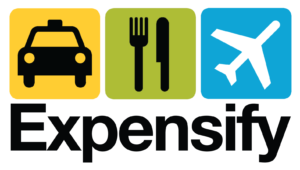QuickBooks Starter Tips
July 31, 2017 by Ed Becker

If you are new to QuickBooks or new to bookkeeping, there are some things you should know before getting started. Hopefully, you have some bookkeeping background because taking on this task can be overwhelming. QuickBooks is quite user friendly and has many tutorials and courses that you can easily access. But without a basic understanding of bookkeeping and/or accounting, it is usually a good idea to hire someone with those skills. After all, this is your company’s finances.
- Contact or find an accountant
You can and should give your accountant access to your QuickBooks. If you already have an accountant, they can help you with setting up your company in QuickBooks. Your accountant will have your chart of account already established and this will be less work, as well as, less confusion for everyone!
- Review the Basics in QuickBooks
Familiarize yourself with the program, use the tutorials and help functions. Take some free online courses. This gives you the opportunity to learn as you go without creating issues with your actual data.
- Setup a “dummy” company in QuickBooks
This is where you can “play” around and get used to how the software works. Mistakes are typically made during the learning curve, this way you can make them without worrying about distorting your company’s information. It is even a good idea to keep this “dummy “company around to test out new things as you learn.
- Security
Your company’s money security is a huge priority
o Choose or create a complex and unique password
o Change your password at least every 90 days and make it a quarterly habit
o Also change the passwords that QuickBooks stores for your banking sites
- Company Preferences
You will find this in the preference link in the company tab, you will enter your company’s financial details here. This usually would include: structure of the business, report forms and Tax ID, as well as, reporting calendar. These are extremely important details, it is wise to have your financial professional check them for accuracy.
- Customer information
Click on the customer tab and start entering your customer information. Your critical addition here is Payment Method. Check directly with your customers to verify how they prefer to pay: check, credit card, cash, etc. Also, ask if you can send a test invoice to ensure they receive it and that the information is correct.
- Vendors & Employees
These are very similar to the customer tab, click on vendors &/or employees and enter the required information. You do not have to enter every single item asked for, but input everything that you know about each. Then you can generate a report with the Report button, this will allow you to check for any missing or incorrect information.
- Flow of Money
This is where you track the income & flow of the dollars your company earns and spends. For this you go to the Banking tab, and begin entering money that comes in, where it comes from, and how it gets spent. You can integrate your financial account here: credit cards & bank accounts, typically. The most common headings you will use are: deposit, cash expense & credit card expense. You also will want to ensure that you can write checks, and do a trial run to ensure it is all working correctly.
QuickBooks is a very popular software, with an online/cloud version, as well as for personal and business bookkeeping. It is user friendly, and if you take the time to start off correctly, it is quite easy to learn. It can be integrated with other programs, online accounts and tax programs which makes it quite seamless to transfer data. Whether you take over your bookkeeping needs, or you hire a professional, it is still a solid business idea that you as the business owner, should at least be able to grasp the basics, to keep you in the loop of maintaining good checks & balances.
Category: Small Business
Tags: QuickBooks, tips




